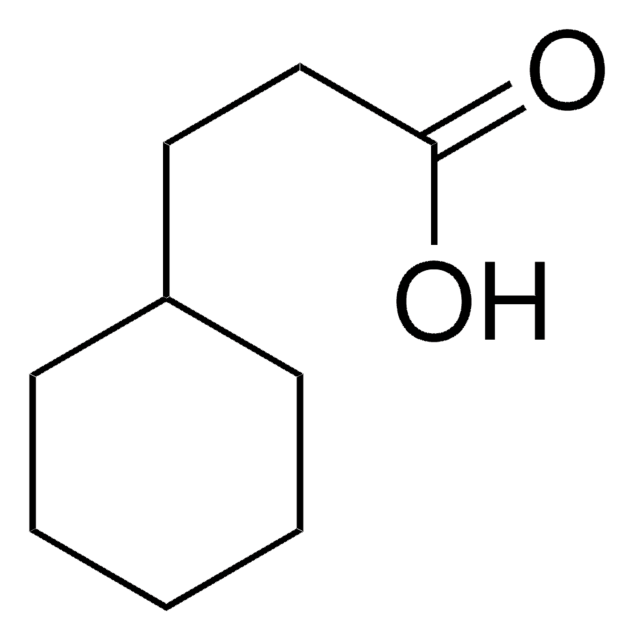538701
2-Ethylhexanoic acid
≥99%
Synonym(s):
2-Ethylcaproic acid
About This Item
Recommended Products
vapor density
4.98 (vs air)
vapor pressure
<0.01 mmHg ( 20 °C)
10 mmHg ( 115 °C)
assay
≥99%
autoignition temp.
699 °F
expl. lim.
1.04 %, 135 °F
8.64 %, 188 °F
refractive index
n20/D 1.425 (lit.)
bp
228 °C (lit.)
density
0.903 g/mL at 25 °C (lit.)
SMILES string
CCCCC(CC)C(O)=O
InChI
1S/C8H16O2/c1-3-5-6-7(4-2)8(9)10/h7H,3-6H2,1-2H3,(H,9,10)
InChI key
OBETXYAYXDNJHR-UHFFFAOYSA-N
Looking for similar products? Visit Product Comparison Guide
Related Categories
General description
It has various industrial applications, such as:
- coolant in automotives
- synthetic lubricant
- wetting agent
- co-solvent
- drying of paints
- defoaming agent in pesticides
Application
- A review of the environmental fate and aquatic effects of a series of C4 and C8 oxo-process chemicals.: This review assesses the environmental impact of C4 and C8 oxo-process chemicals, including 2-Ethylhexanoic acid, detailing their degradation, persistence, and effects on aquatic ecosystems (Staples, 2001).
signalword
Danger
hcodes
Hazard Classifications
Repr. 1B
Storage Class
6.1C - Combustible acute toxic Cat.3 / toxic compounds or compounds which causing chronic effects
wgk_germany
WGK 1
flash_point_f
237.2 °F - closed cup
flash_point_c
114 °C - closed cup
ppe
Eyeshields, Faceshields, Gloves, type ABEK (EN14387) respirator filter
Certificates of Analysis (COA)
Search for Certificates of Analysis (COA) by entering the products Lot/Batch Number. Lot and Batch Numbers can be found on a product’s label following the words ‘Lot’ or ‘Batch’.
Already Own This Product?
Find documentation for the products that you have recently purchased in the Document Library.
Customers Also Viewed
Our team of scientists has experience in all areas of research including Life Science, Material Science, Chemical Synthesis, Chromatography, Analytical and many others.
Contact Technical Service










